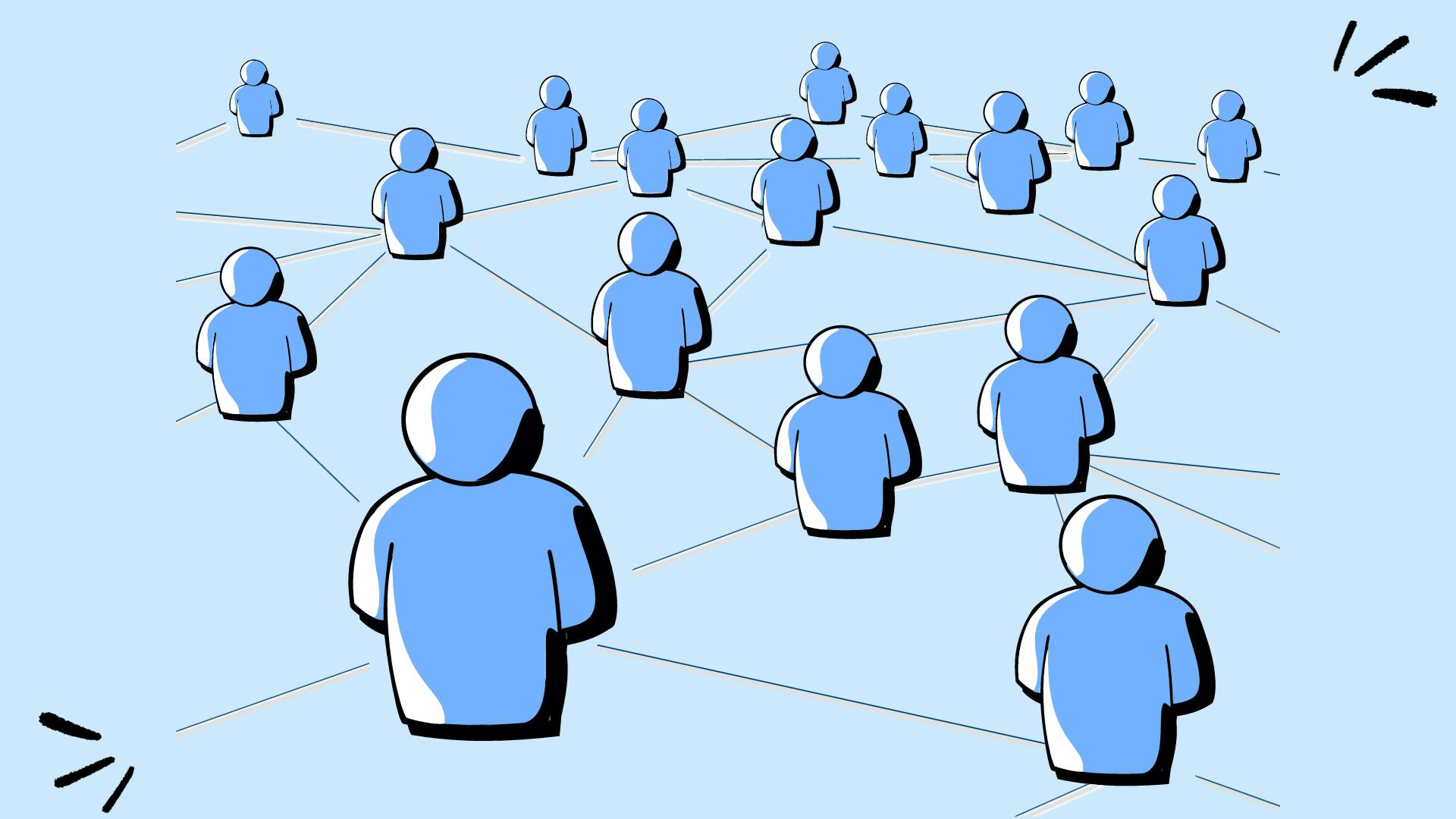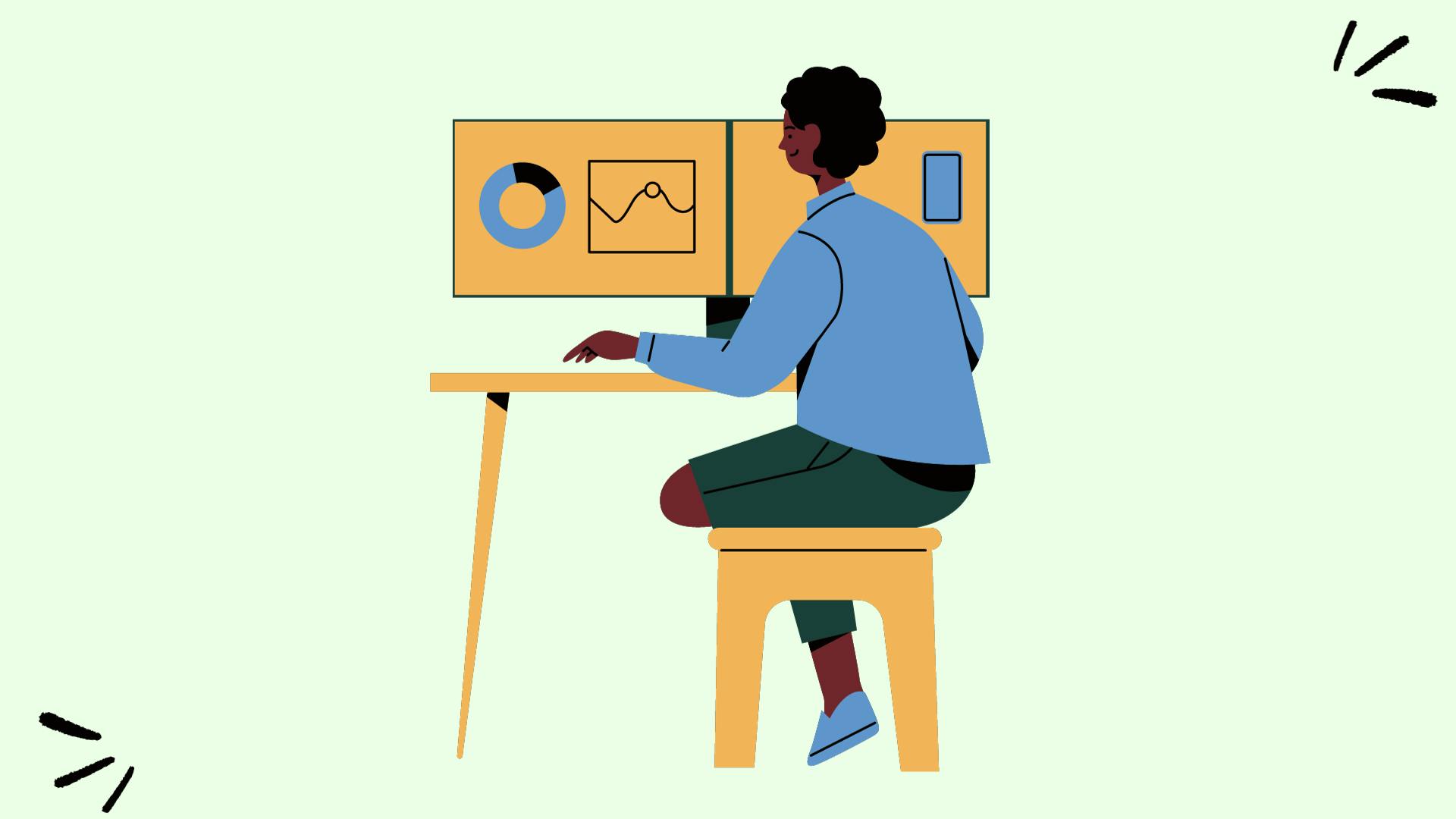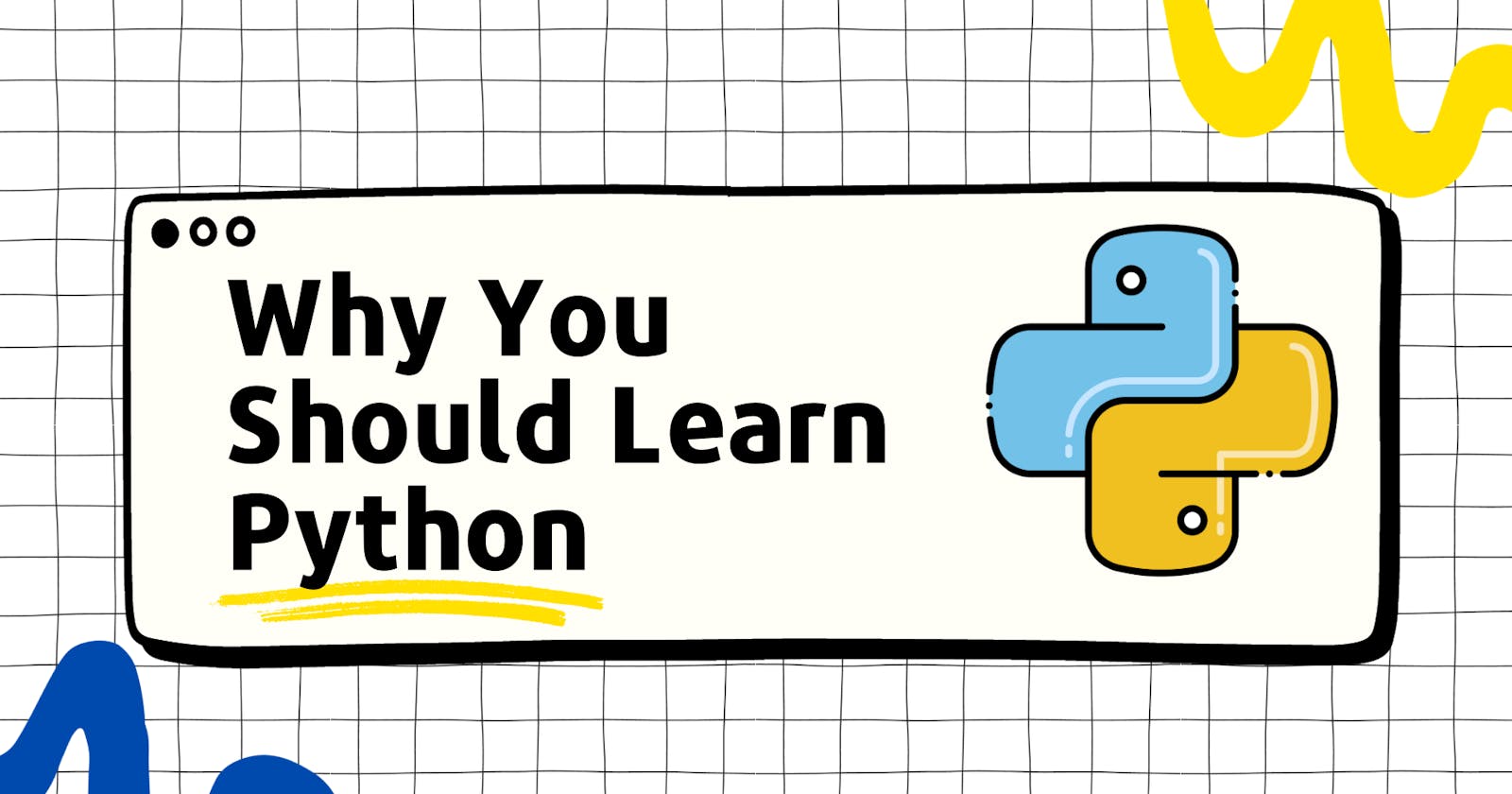Why You Should Learn Python
Python: The Future-Proof, Versatile Programming Language
Imagine a programming language that's so versatile, it can be used to build everything from websites to robots. A language that's so easy to learn, even a beginner can master it in a few weeks. A language that's so in-demand, it's one of the most sought-after skills in the tech industry today.
That language is Python.
What is Python?

Python is a general-purpose programming language that's used for a wide variety of tasks, including web development, data science, machine learning, and artificial intelligence. It's also a popular language for teaching programming, due to its simple syntax and readability.
Why should you learn Python?

There are many reasons why you should learn Python, but here are a few of the most convincing:
1. Python is future-proof.

Python has been around for over 30 years, and it's still one of the most popular programming languages in the world. This is because Python is constantly evolving and being updated with new features.
2. Python is versatile.

Python can be used to build a wide variety of applications, from simple websites to complex machine learning models. This makes Python a valuable skill to have, regardless of your career goals.
Web development: Python is used to develop popular web frameworks such as Django and Flask. Companies of all sizes use these frameworks to build powerful and scalable web applications.
Data science: Python is used to analyze data and create machine learning models. Data scientists use Python to extract insights from large datasets and make predictions about the future.
Machine learning: Python is used to develop and train machine learning models. Machine learning models are used to automate tasks, make decisions, and solve complex problems. For example, Python is used to develop machine learning models that can classify images, translate languages, and recommend products to users.
Artificial intelligence: Python is used to develop artificial intelligence applications such as chatbots and virtual assistants. AI applications are becoming increasingly common in our everyday lives, and Python is the language of choice for many developers in this field.
Automation: Python can be used to automate tasks such as data entry, web scraping, and system administration. This can save businesses a lot of time and money.
3. Python is easy to learn.

Python is known for its simple syntax and ease of learning. It has a relatively small number of keywords and operators, and its code is generally very readable. This makes it a good choice for beginners and experienced developers alike.
To see how simple Python’s syntax is, let’s compare it to another, less simple language, such as C++. Here is a simple example of a "hello world" program in Python:
print("Hello, world!")
This program simply prints the message "Hello, world!" to the console.
Here is the same program in C++:
#include <iostream>
int main() {
std::cout << "Hello, world!" << std::endl;
return 0;
}
As you can see, the C++ program is more complex than the Python program. It requires a header file and a main() function, and it uses the std::cout object to print the message to the console.
Here is another example, this time of a function that adds two numbers together:
def add(a, b):
"""Returns the sum of two numbers."""
return a + b
This function takes two numbers as input and returns the sum of those numbers.
Here is the same function in C++:
int add(int a, int b) {
return a + b;
}
Again, the C++ function is more complex than the Python function. It requires the int data type to be specified for the function parameters and return value.
Here are some of the things that make Python's syntax simpler:
Python does not require semicolons at the end of statements.
Python does not require curly braces to define blocks of code.
Python does not require type declarations for variables.
Python has a number of built-in functions and libraries that make it easy to perform common tasks.
4. Python has a large community of users and developers.

This means that there are many resources available to help you learn Python and troubleshoot problems.
Here are some specific examples of how Python's large community benefits users and developers:
Documentation and tutorials: There is a wealth of documentation and tutorials available for Python, both online and in print. This makes it easy for users and developers to learn the language and get started using it.
Libraries and frameworks: Python has a large ecosystem of libraries and frameworks that make it easy to develop applications for a wide variety of tasks. This saves users and developers a lot of time and effort.
Support: If you get stuck with Python, there are many places where you can get help. There are online forums, mailing lists, and even in-person meetups where you can ask questions and get help from other Python users and developers.
Bug fixes and security updates: Python's core developers regularly release bug fixes and security updates for the language. This helps to keep Python secure and reliable.
New features and improvements: Python's core developers and community members also regularly propose and implement new features and improvements for the language. This helps to keep Python up-to-date and competitive with other programming languages.
Python's large community of users and developers is a valuable asset to the language. It makes Python easier to learn and use, and it helps to keep Python secure, reliable, and up-to-date.
5. Python is free and open-source.

Python is free and open-source, which means that you can download and use it for free, and you can also contribute to the development of the language. This has several benefits:
Accessibility: Anyone can learn and use Python, regardless of their financial background. This makes Python a more accessible language for people in developing countries and for people from underrepresented groups in the tech industry.
Innovation: Python's open-source nature allows anyone to contribute to the development of the language. This has led to the development of a wide range of libraries and frameworks that make it easy to develop applications for a wide variety of tasks.
Security: Python's open-source nature makes it easier to identify and fix security vulnerabilities. This is because the code is open to scrutiny from anyone in the community.
How to get started with Python

If you're interested in learning Python, there are many resources available to help you get started. There are online tutorials, books, and even courses that can teach you the basics of Python programming. Once you have a basic understanding of Python, you can start to explore the many different libraries and frameworks that are available for specific tasks.
Tips for beginners:
Start with the basics. Learn about the different data types, operators, and control flow statements in Python.
Use online resources and tutorials. There are many great resources available online to help you learn Python. For example, Youtube, Freecodecamp, Udemy, etc
Practice writing simple Python programs. This will help you to solidify your understanding of the language.
Don't be afraid to ask for help. If you get stuck, there are many online forums and communities where you can ask questions and get help from other Python developers.For example; Discord, Stackoverflow, Python Official Website.
Cheers!

